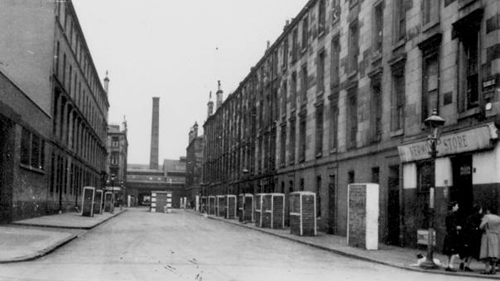Glasgow ARP Wardens - Times Past

In partnership with the Glasgow Times, our archivists are exploring Glasgow's fascinating history. This week, Barbara McLean writes about Glasgow's ARP wardens.
Thursday 13th March 1941. 9.10pm. Siren (Alert). High Explosive, Turnberry Road. Clarence Drive (tenement houses demolished). Several casualties (trapped).
So wrote the Divisional ARP Warden of the 22nd (Kelvinside) Ward in his diary on the night of the infamous Clydeside raids. These raids subjected not only Clydebank to attack and bombardment but also areas of Glasgow itself. Hyndland, Tradeston, Knightswood and Maryhill were all hit. We hold the papers of this Ward, which was one of many that the city was divided into for the purposes of Air Raid Precautions (ARP) during the Second World War.
ARP activities in Glasgow began long before Britain’s declaration of war on Germany on 3 September 1939. By that time, Glasgow Corporation had a department dedicated to this function. Originally called the Air Raid Precautions Department, it was named for the biggest perceived threat to the home front. Its name had changed to the Civil Defence Department by 1942.
This department co-ordinated a huge number of volunteers to act as wardens throughout the city. Their duties were varied but focused on protecting and helping the public during and after air raids. As well as fire-watching and staffing the public air raid shelters, wardens also provided first aid to injured civilians and both rescue and recovery for individuals trapped in the rubble of ruined buildings.
On the outbreak of war, the wardens’ equipment was simple, only masks and protective clothing. Time and experience changed what was considered necessary. By January 1944, each Glasgow warden was issued with fourteen separate pieces of personal equipment including a greatcoat, beret or felt hat, boots, a steel helmet, a whistle and a lamp.
The wardens and the public relied on the city’s alarm network to alert them to aerial attacks. This large network of powerful electric and steam sirens had been set up at strategic points throughout the city and were triggered by remote control when necessary. When the warbling scream of the siren was heard, those without access to their own shelters (pictured) made their way to the nearest public shelter.
There, a shelter warden was responsible for ensuring that the occupants observed the Rules of Conduct for Public Shelters. These rules are reproduced in the excellent Glasgow Corporation Manual of Instructions for the Civil Defence Wardens which form part of the 22nd Ward’s papers. Among the rules to be observed was one which stated that ‘no person without permission smokes, sings or plays any musical instrument in the shelter’.
Yet it was music, dancing and song which relieved Glasgow’s wardens from their heavy burden of public duty for a time. Those serving in the 22nd Ward had the benefit of a Social Committee which organised nights of whist and dancing for the hard-working volunteers.
Glasgow’s Wardens’ Service was officially stood down on 2 May 1945. However, the wardens were still on call to undertake the work required to close the service properly including the return of their personal equipment. The 22nd Ward marked the end of their role with a Special Service of Thanksgiving on Sunday 27 May 1945 at Hyndland Parish Church.
